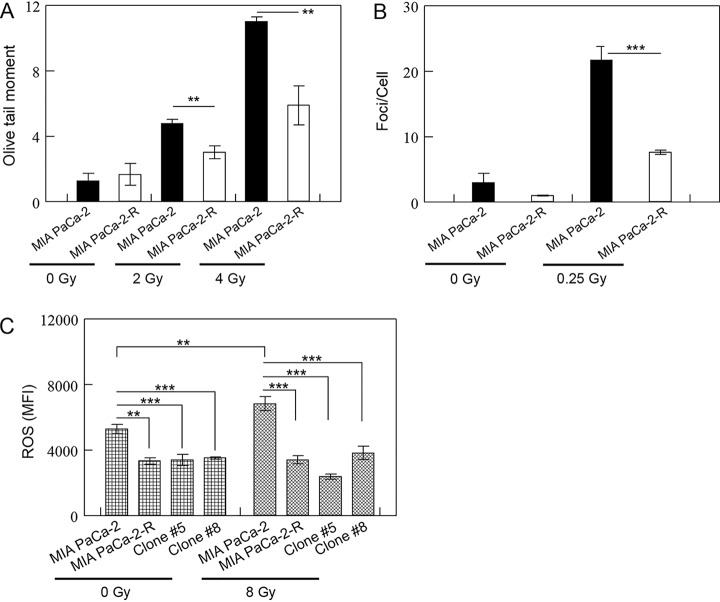Fig. 3.
DNA repair and anti-ROS defense capabilities are enhanced in the radioresistant cells. A and B, DNA repair capacity is increased in the radioresistant cells. A, MIA PaCa-2 cells and MIA PaCa-2-R cells were mock-treated or treated with 2 or 4 Gy of X-rays, and DNA damage was measured using the alkaline comet assay 15 min after the mock or X-ray exposure. Fifty randomly selected comet images on each slide (n = 3) were analyzed using the software CASPLab. B, The indicated cells were mock-treated or treated with 0.25 Gy of X-rays, and the cells were stained with an antibody against γ-H2AX (phospho-ser139) 15 min after the mock or X-ray exposure. γ-H2AX foci of 150 randomly selected cells in 3 groups (50 cells/each) from 2 independent sample preparations were counted using the software ImageJ. C, The defense against ROS is enhanced in the radioresistance cells. The indicated cells were mock-treated or treated 8 Gy of X-rays, and ROS levels in the cells were measured by monitoring DCFH oxidation with a flow cytometer 30 min after the exposure. Mean fluorescence intensity (MFI) was used to represent ROS levels in the cells. **, p < 0.01 and ***, p < 0.001.

